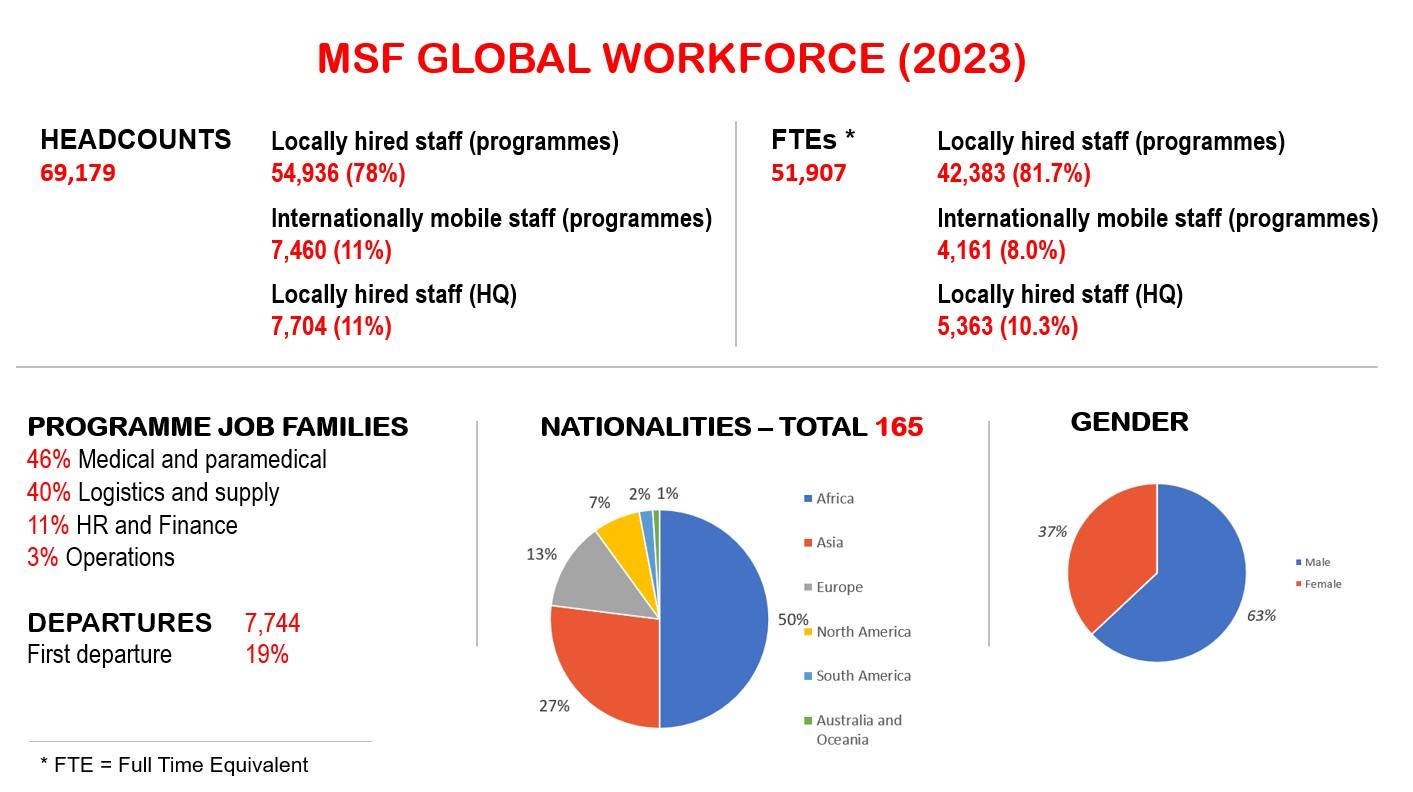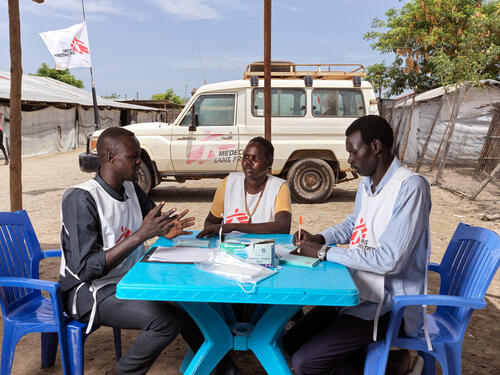Introduction
MSF as an employer provides its staff with remuneration packages that include salaries and benefits. The benefits and salary a staff member receives depend on their position, where they work and how they are contracted.
MSF’s staff rewards are defined based on global frameworks and grids applicable to different categories of staff and on local labour markets, laws, regulations and practices.
They are also based on a set of principles agreed at the international level, which include statements on HR principles, MSF as a Responsible Employer and Behaviour.
MSF Global Human Resources Overview
Médecins Sans Frontières is a Movement made of associations, offices and missions around the world. Each of these entities recruit and contract their own staff and provide them with a salary and a set of benefits.
In 2021, close to 63,000 people worked for MSF – including staff on part-time and short-term contracts.
Staff categories
There are three main categories of MSF employees.
The large majority are the locally-hired staff in programmes, working in MSF’s projects and missions – previously called “national staff”.
The second category is made of internationally mobile staff, technical experts and experienced managers who are assigned for fixed-term assignments in projects and missions – previously called international staff or “expats”. They have specific contracts, with special conditions and benefits linked to the mobile nature of their commitment to MSF.
The third category comprises staff who work in headquarters and offices, in strategic support to the operations, in communication and fundraising, and other administrative functions. They are mostly hired on local contracts.
Doctors, nurses and many other professions
“Oh, you work with MSF? Are you a Doctor?” This is probably amongst the most frequent questions asked to people who work with MSF. The medical care the organisation provides is of course made possible by our medical and paramedical employees, who make up to 45% of our staff. But a lot of other professions are needed to support this.
MSF’s medical and paramedical staff include doctors, nurses and many specialist care-givers, from surgeons to midwifes, anesthesiologists, psychologists and many others.
To support medical operations, MSF employs staff in the fields of finance, logistics, IT, administration, human resources, communications, advocacy and many other professions.
Facts and figures about MSF’s workforce
In 2022, a global workforce made up of 67,799 individuals contributed to MSF activities.
This number includes staff who have worked for the organisation for part of the year, including part-time, temporary and closed positions.
At MSF, we also use what are called Full-Time Equivalents (FTEs) to measure the size of our workforce and how it evolves. For instance, if the same position has been occupied by two persons during a year, it would only count as one FTE.
- In 13 years, MSF’s workforce has more than doubled, from 22,000 FTEs in 2009 to 49,000 FTEs in 2022.
- The vast majority of staff continue to be those who are locally hired to work in MSF programmes (previously called National Staff). They made up over 82% of FTEs in 2022.
- Internationally mobile staff made up just over 8% of FTEs in 2022.
- Staff working in MSF Headquarters and offices represented 10% of FTEs in 2022.




